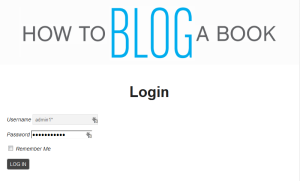 In my last post, I discussed a variety of ways to create an online course from your book. Today, I’d like to explain why I think the best way to deliver them with a membership site.
In my last post, I discussed a variety of ways to create an online course from your book. Today, I’d like to explain why I think the best way to deliver them with a membership site.
1. Automation
First, and foremost, membership sites are automated. This means much of the work is done for you. With a plugin like Premise by CopyBlogger, which is what I use, payment, mailing list, and delivery, including scheduling, are all integrated into the system. That means when someone purchases one of my programs, like Author Training 101, Author of Change Transformational Coaching Program or How to Build a Business Around Your Blog, they automatically get signed up for the appropriate mailing list and they become a Premise “member.” This last point is very important. Let me explain.
2. User Credentials
As they pay, these new students (or customers) actually register with Premise on my own site and become “users.” Each user creates his or her own password and login credentials and becomes a site “member” and a Premise member. The “Thank You” note they then receive as confirmation includes a URL sending them to a login page for one of my coaching and educational sites—a membership site. These students can then simply login and begin accessing whichever course they have purchased. If they lose the password or login credentials, they can change these on their own, just like they would on any other site. They don’t need to contact you, which they would if you use password-protected blog pages.
 3. Course Access
3. Course Access
Also, they only get access to specific material—whatever they purchased. However, all your courses are set up on your blog site. If someone buys three courses that all reside on one membership site, they will see links to all three; if they only purchased one of the three, they only see a link to access that one. That said, on the login page they can see promotions for the other course if you set it up that way—as does anyone who happens to click on the login page, which you can make visible.
4. Scheduling
Not only that, students see the course material magically (not really…this is coded into the pages) appear on a predetermined schedule. That means, users only see Week One of the course on the first week, if you want the course “dripped out over time.” Week Two’s lesson won’t appear until the second week after they purchase it. Students, or users, all can be learning different lessons if you allow them to start at different times—if you have you course for sale 24/7. If you want them to have access to the whole course immediately, you can set it up to be available in its entirely as soon as the payment goes through PayPal.
5. Value
The perceived value of a membership site seems to be higher than with an autoresponder program or a basic password-protected page on your blog. The pages look professional. The “private” and “members-only” aspect can entice readers from your blog into the site for the extra content others are receiving. Not only that, you really can save your best material for your “members” or students.
Also, as mentioned in my last post, your blog and book readers actually want a deeper level of access to you and your information. In a membership site you provide this. Your online courses give readers more personal access to you, as well as possibly more interaction, and a way to gain a higher degree of understanding of your book’s material. That IS additional value.
I plan to continue building out my business—around my book and my blog—using membership sites and Premise. I have found certain aspects of this beyond my technical abilities, and I have found two people to help me. If you need recommendations, please email me with your specific needs.

Leave a Reply